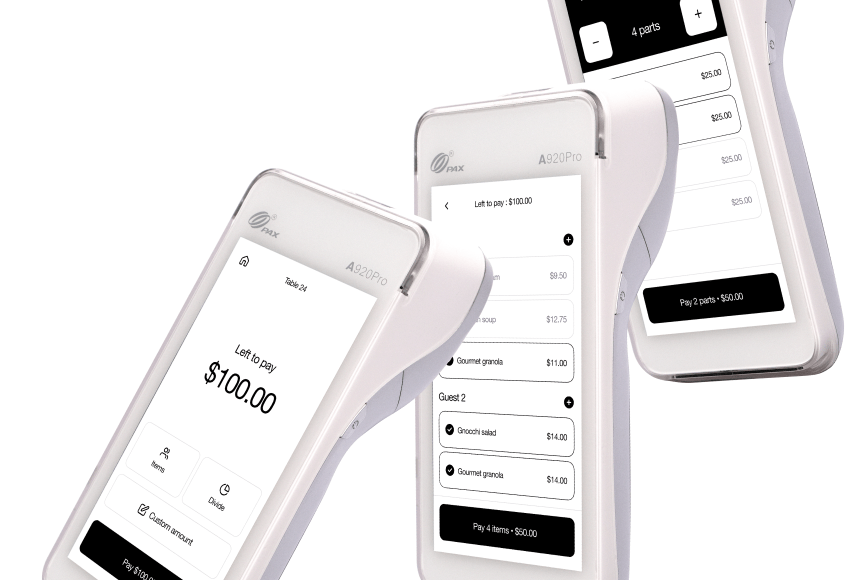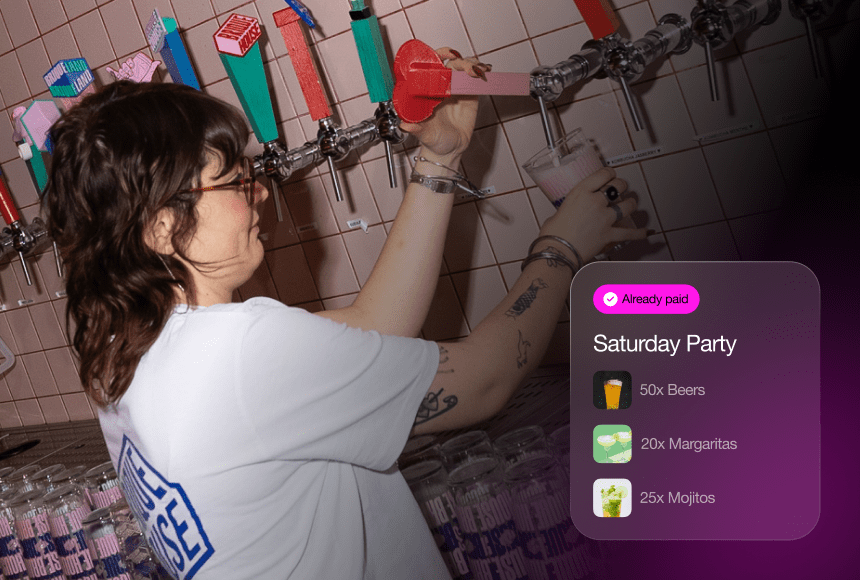
How Modern Tipping Methods Can Energize Your Restaurant Staff
Why Digital Tipping Is Reshaping the Restaurant Landscape
If you run a restaurant, you know that tips are more than just a financial perk. They reflect diner satisfaction, reward staff for going the extra mile, and contribute significantly to front-of-house earnings. But in a world quickly adopting mobile payments and cashless transactions, the traditional tip jar or printed receipt tip line may not cut it anymore. According to recent statistics on digital tipping, restaurants that enable digital gratuities often see higher average tip amounts—a win for both servers and the bottom line.
Yet what’s truly interesting is how these digital tip systems can also boost team motivation. By eliminating ambiguity around how tips are collected, distributed, or reported, you create transparency and trust among employees. Moreover, a seamless payment and tipping experience—like the one offered by sunday—can foster an energized, customer-centric atmosphere that keeps staff morale high. Below, we’ll explore how digital tips can elevate the entire dining experience, from the pay-at-table moment to staff job satisfaction.
1. Speed and Transparency That Empower Staff
In many restaurants, the old routine for collecting tips goes like this: the customer pays in cash or card, staff gather receipts at shift’s end, and someone crunches numbers in the back—sometimes well past closing time. This process often feels messy. It can lead to confusion about who earned what, or subtle doubts about fairness if the totals don’t align with expectations.
How digital tipping helps:
- Instant Feedback: With a digital solution, each payment—and the tip—appears in real time on a dashboard accessible by management (and sometimes staff). Servers immediately see how their tables tipped that day or night.
- Better Record-Keeping: Instead of shuffling paper receipts, data is automatically compiled. This eliminates end-of-shift guesswork, letting staff trust the system without worrying they’ll miss out on tips owed.
- Quicker Payouts: In some restaurants, employees can receive their tip amounts at the end of each day—no waiting for weekly or monthly tallies. That prompt reward boosts short-term motivation.
When staff sense that their efforts translate seamlessly into tips—without a labyrinthine process—their day-to-day enthusiasm often grows.
2. Encouraging Team Collaboration Through Tip Distribution
For restaurants that opt for tip pooling or partial pooling, a digital approach can clarify exactly how much each role should receive. This clarity fosters teamwork rather than competition.
Why it matters:
- Unified Goals: If the kitchen and bar each get a slice of digital tips, everyone’s motivated to keep the service consistent and swift. The entire staff invests in satisfying guests, not just the server assigned to a table.
- Reduced Tension: Traditional tip jars or complicated tip-out schemes can breed suspicion—“Am I getting shortchanged?” With digital records, staff see the breakdown and trust that it’s correct.
- A Sense of Fairness: Knowing that tips reflect the full team’s effort can nudge the back-of-house to support servers more, and vice versa, ultimately improving the entire guest experience.
When your line cooks, bartenders, and runners all have a stake in each tip, your restaurant environment feels more collaborative—and staff morale rises accordingly.
3. Higher Tips Through Streamlined Guest Experiences
The phrase “time is money” especially rings true in the bustling world of food service. The longer guests wait for their check, the more their excitement about the meal may wane—impacting the tip they leave. Digital solutions like scanning a QR code at the table or using a personalized payment link can reduce these friction points.
Here’s why it boosts motivation:
- Customer Satisfaction: Diners who appreciate a quick checkout often reward that convenience by tipping a bit more. They exit on a high note, feeling in control of their time and budget.
- Less Server Stress: Servers don’t have to run back and forth with card readers or wait for the printer to spit out receipts. Freed from these tasks, they can offer more personalized attention, which in turn elevates tips.
- Better Table Turnover: When guests pay faster, tables free up sooner—allowing for more seatings per shift. More seatings can translate into a higher total tip pool, raising optimism throughout the team.
Your staff can sense when diners are leaving happy, and that sense of job well done feeds right back into how they handle the next table—creating a positive feedback loop.
4. The Psychology of Digital Tipping and Suggested Amounts
Many digital tip platforms let you preset percentages (15%, 20%, 25%, etc.) or set a custom suggestion. This small tweak can significantly shift tipping behaviors. Research shows that when customers see a polite prompt, they’re more inclined to choose a middle or higher tip level, rather than skip it or select the smallest option.
Implications for motivation:
- Increasing Average Tips: With a well-designed tip prompt, staff will notice bigger tips more consistently, boosting morale and gratitude for the system.
- Reinforcing Good Service: When staff see how small changes—like being extra attentive or personal—affect the tip amounts, they’re encouraged to maintain that high level of service.
- Reducing Awkwardness: Some diners shy away from adding tips on a clunky card reader or scribbling on a receipt. A digital prompt normalizes and simplifies tipping, raising the likelihood of consistent gratuities.
The effect? Employees feel recognized for their work, fueling an environment where they strive even harder to impress customers.
5. Real-Time Data Sharing Empowers Employees
One underrated advantage of digital tipping is the data it generates. While owners can track average tip percentages or total weekly tips, employees can also access some of this insight—enhancing their sense of ownership over their performance.
Consider the benefits:
- Transparent Goals: If your staff knows the average tip percentage is 18%, they may aim to push it to 20%. This fosters a collective effort to elevate the dining experience.
- Healthy Competition: Some restaurants share top tip earners’ stats (without naming names if they prefer anonymity). This can spark a friendly rivalry that keeps service levels high.
- Immediate Feedback Loops: If the tip amount for a particular day or shift lags, staff might talk about what went wrong—maybe a big party left a smaller tip because of slow appetizer service or an unclear special. That conversation leads to quick improvements.
Employees who see real numbers rather than monthly statements are more likely to adapt on the fly, which helps maintain motivation day after day.
6. Minimizing Conflicts and Misunderstandings
Cash tips can create confusion or disputes: “Who helped that table the most?” or “Did someone pocket extra cash?” Digital systems, by contrast, eliminate guesswork.
Reduction of friction:
- No More Counting Errors: The system tallies the total tip automatically and disperses shares according to your policy. Everyone sees the final breakdown, preventing suspicion.
- Less Tension About Check Splitting: With a digital approach, large groups can split payments and tips in a matter of seconds, fairly assigning tips to each sub-bill. This keeps staff from playing mediator among diners, which can be stressful and time-consuming.
- Happier Staff = Better Service: Freed from worrying about tip fairness or dealing with conflicting claims, your employees channel their energy into delighting guests. That positivity radiates across the dining room.
When petty disputes vanish, staff can operate as a cohesive unit—leading to a more motivated atmosphere.
7. Rewarding Back-of-House Staff Through Shared Gratitude
Some restaurants extend digital tip sharing to kitchen staff, especially when local regulations permit it. After all, a beautifully plated entrée or a timely prepared dessert also impacts the diner’s willingness to tip.
Impact on motivation:
- Inclusivity: When line cooks or pastry chefs see tangible recognition in the form of tip shares, they’re reminded how crucial their role is in the guest experience.
- Alignment of Goals: The entire team—front and back of house—works in unison to maintain top quality and speed, knowing that tips benefit everyone.
- Reduced Turnover: Kitchen staff who feel valued financially might be less tempted to jump ship. In an industry with notoriously high turnover, that’s a big advantage.
While the details of tip pooling or tip outs must adhere to legal frameworks, bringing the back-of-house into the digital tip fold can spark a sense of collective achievement that resonates through every plate and every shift.
8. Enhancing the Human Element Alongside Tech
There’s a misconception that digital solutions might strip away the personal touch. Actually, if used smartly, digitizing the tip experience can free up staff to engage more authentically.
How it lifts morale:
- Less Time Chasing Receipts: If scanning a QR code or tapping a screen replaces a complicated handshake of bills and coin change, servers spend less time on mechanical tasks. They can instead focus on conversation or menu guidance.
- Deeper Guest Connection: Freed from the final check awkwardness, staff can talk up that new dessert, recommend local attractions, or simply say a sincere goodbye, which can nudge tips upward.
Remember, technology should complement your staff’s strengths, not overshadow them. A friendly smile plus a frictionless digital checkout can be a potent combo.
Nurturing a Tip-Positive Culture: Final Thoughts
Boosting tip amounts is often about more than just telling diners to pay more. It’s about weaving technology, staff training, transparent policies, and a guest-first ethos into one cohesive experience. Digital tipping, through platforms like sunday, offers an excellent stepping stone to unify these elements.
When staff see consistent results—like accurate tip distributions, higher gratuities, and fewer conflicts—they’re bound to feel a fresh surge of motivation. They realize that top-notch service translates directly into tangible reward. Meanwhile, the streamlined workflow and real-time data let managers identify small service hiccups or big success stories, refining the approach for each shift.
Consider the intangible benefits: Staff morale is critical in an industry that thrives on genuine, upbeat service. Motivated employees greet guests with enthusiasm and handle problems gracefully. That vibe, in turn, fosters satisfied diners willing to reward your team’s effort with bigger tips. This cycle of positivity and mutual benefit is precisely what every independent restaurant hopes to cultivate.
Ultimately, digital tips symbolize more than just convenience—they represent a shift toward transparency, efficiency, and a modern approach that acknowledges everyone’s contribution. If you’ve been debating whether to migrate from pen-and-paper receipts to a digital tipping model, think about the potential morale boost. Bringing your staff onboard with the right tools can create a culture of camaraderie and shared success, where each shift feels like a team victory—and that excitement typically shows up in the tip jar.
Find out more today
Drop us your details below and we’ll reach out within the next 24h
More tips means a better service.
More tips mean better guest-experience, and better staff-retention.



